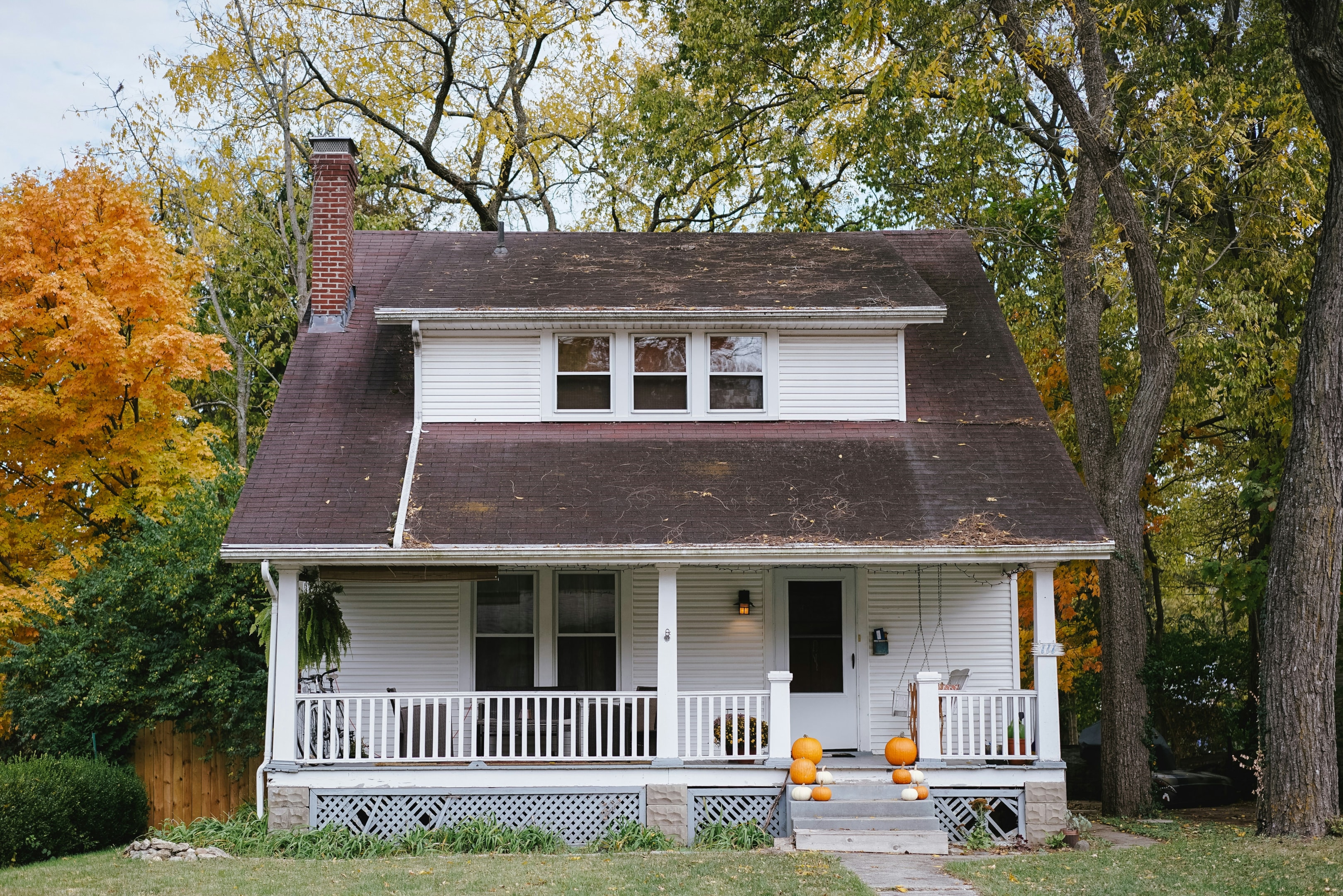The Essential Guide on How to Finance Your First Investment Property
Introduction: Breaking Through the Financing Barrier
Let's be real—getting started in real estate investing is exciting, but financing can feel like a brick wall. You might wonder if you need 20% down, if your W-2 income qualifies, or if there are creative ways to finance without a lot of cash. The good news? You don't need to be rich or have perfect credit—just the right strategy. This guide covers traditional loans, creative financing hacks, and actionable tips to help you fund your first investment property successfully.

Why Invest? The Benefits of Investment Properties
Investing in real estate isn't just about owning a piece of property—it's about building a foundation for long-term financial success. One of the biggest draws for real estate investors is the ability to generate rental income, creating a steady stream of passive income that can supplement your day job or even replace it over time. As your investment property appreciates, you're also building equity and increasing your net worth. But the perks don't stop there. Investment properties come with valuable tax benefits, such as the ability to deduct mortgage interest and property taxes, which can significantly reduce your taxable income. With smart investment property financing, you can leverage other people's money to cover most of the purchase price, amplifying your returns. Plus, real estate is a tangible asset that can help diversify your investment portfolio, reducing your reliance on the ups and downs of the stock market. The right investment property can be a powerful tool for wealth creation, offering a mix of cash flow, appreciation, and tax advantages that few other investments can match.
Clarify Your Investment Game Plan
Before you go financing anything, let's talk about strategy. Choosing the right real estate investing strategy, whether it's a traditional buy-and-hold approach or an innovative method like crowdfunding, is crucial for aligning your financing and investment goals.
Short-Term or Long-Term Goals?
Are you aiming for:
Quick flips to generate lump-sum profits?
Buy-and-hold rentals for long-term passive income?
Or maybe the BRRRR strategy to grow your portfolio fast?
Each strategy impacts your financing needs differently.
Know Your Exit Strategy
Your financing approach should align with your exit plan. If you're planning to flip, hard money might work (see How to Flip Houses Successfully: Essential Tips and Common Pitfalls to learn more). For long-term rentals, a conventional or DSCR loan might be better. Your exit strategy should guide your choice among various loan options, such as hard money loans for flips or conventional loan options for long-term rentals.
Property Considerations: Choosing the Right Investment
Finding the right investment property involves more than choosing a house you like; it requires smart business decisions. Start by researching the local real estate market to understand trends in property values, rental income potential, and vacancy rates. Consider the property's condition, age, and renovation opportunities that could increase its value or rental appeal. Always schedule thorough inspections and appraisals to uncover hidden issues and accurately assess worth.
Next, calculate expected cash flow by estimating rental income and subtracting expenses like mortgage payments, property taxes, insurance, and property management fees. A property generating positive cash flow from day one is a strong candidate for your portfolio. By carefully evaluating these factors, real estate investors can confidently select properties that align with their financial goals and set themselves up for long-term success.

Know the Real Costs of Buying Your First Property
Spoiler alert: The purchase price is just the beginning. The interest rate on your loan will significantly impact your monthly payments and the total cost of your mortgage payment over time. When budgeting for a property, be sure to consider not only the purchase price and closing costs, but also how interest rates will affect your monthly payments.
Down Payment
15%–25% down is typical for non-owner-occupied loans.
FHA loans allow 3.5% down if you live in the property (house hack alert!).
Closing Costs
Budget for 2%–5% of the purchase price. That includes title insurance, lender fees, appraisal, and more.
Reserves
Lenders may require 3–6 months of monthly mortgage payment in reserves—plus you'll want an emergency fund for repairs and vacancies.
Assess Your Financial Profile Like a Pro
Lenders will scrutinize your financial situation. Here's how to prep. Lenders use the underwriting process to evaluate your credit history, debt-to-income ratio, and overall financial stability before approving a loan.
Credit Score
740+: best rates
620–739: decent financing
Below 620: tough—but not impossible
Income Documentation
Have your W-2s, tax returns, bank statements, and current rental income ready.
Conventional Financing Options (Great for First-Timers)
1. Conventional Mortgage
Conventional mortgages, also known as conventional loans, are the most common financing option for residential real estate, including single-family and multifamily investment properties. They typically require solid credit and a down payment of 15–25%, with stricter qualification criteria than loans for primary residences. Borrowers with strong financial profiles can often secure competitive interest rates, making conventional loans a popular choice for first-time real estate investors seeking investment property financing.
2. FHA Loan (House Hack Friendly)
Buy up to four units with just 3.5% down using an FHA loan insured by the Federal Housing Administration, designed for primary residence purchases requiring you to live in one unit—making it a perfect entry point for first-time investors.
3. VA Loan (For Military Veterans)
0% down and no PMI for purchasing your primary residence; available for properties with up to four units if you live in one—a major benefit for qualifying veterans. This loan option not only reduces upfront costs by eliminating the down payment but also lowers monthly expenses by removing the need for private mortgage insurance (PMI). Designed specifically for military veterans, active-duty service members, and eligible surviving spouses, VA loans make homeownership more accessible. By allowing the purchase of multi-unit properties with occupancy in one unit, VA loans offer veterans a valuable opportunity to start investing in real estate through house hacking—generating rental income while living on-site. These favorable terms and flexibility make VA loans a powerful tool for veterans entering the real estate market with minimal financial hurdles.
4. Local Bank or Credit Union Loans
Often more flexible than national banks, local banks and credit unions excel in relationship-based underwriting and sometimes offer portfolio loans, which they hold themselves, allowing for more flexible terms on investment properties.

Creative Financing Strategies (Use What You've Got)
When banks say no, you have various creative financing options for real estate investment, including private money loans, hard money loans, investment property loans, and leveraging home equity through home equity loans, home equity lines, and cash-out refinance. Private lenders often offer more flexible terms than traditional sources, making it easier to buy investment or rental properties when conventional loans aren't available. Hard money loans, typically used for short-term strategies like flipping or the BRRRR method, come with higher rates and faster approval. Investment property loans usually require higher down payments and stricter qualifications but may consider anticipated rental income to help you qualify. Accessing home equity via cash-out refinance, home equity loans, or HELOCs can fund additional investments.
For larger deals, such as multi-unit or commercial properties, commercial loans may be necessary. Additionally, seller financing, where you work directly with the property owner, offers another creative financing avenue. Finding the right investment property loan or financing option aligned with your strategy is key to successful real estate investing. To learn more about each of these types of financing strategies, see Creative Financing for Real Estate Investors: Top Tips to Save Money.
Seller Financing
Negotiate with the property owner to act as the lender and set the loan terms directly with you as the buyer. Terms are often flexible, and credit checks may not be required.
Private Money
Private money lenders, such as friends, family, or local investors, can provide a private money loan or private money loans as an alternative to traditional banks. Private lenders often offer more flexible terms and faster funding for real estate investment, making them an attractive option for those seeking creative financing solutions.
Hard Money Lenders
Hard money loans offer fast funding based on the property's value since they are short-term, asset-based financing options. However, they typically come with high interest rates ranging from 8% to 15% and short terms of 6 to 12 months. These loans are commonly used for flipping houses, quick property investment strategies, or the BRRRR method.
Joint Ventures
Team up with someone who has the money but lacks time or knowledge. You provide sweat equity; they provide capital.
House Hacking: The Smartest Way to Start with Low Money Down
Want to live for free and build equity? Buy a duplex, triplex, or fourplex as your primary residence, live in one unit, and rent out the others using government-backed FHA or VA loans available for properties with up to four units. This strategy lets tenants cover your mortgage while you build wealth and gain hands-on experience, making house hacking the most beginner-friendly path to real estate success.
Self-Directed IRAs: Use Your Retirement Funds to Invest
You can use your IRA or 401(k) to invest in real estate through a Self-Directed IRA (SDIRA), allowing tax-deferred or tax-free growth. However, you cannot live in or personally manage the property, and all income and expenses must flow through the IRA. This strategy is a powerful way to build long-term wealth, especially if you're already maximizing your retirement contributions.

First-Time Homebuyer Grants & Government Incentives
Don't sleep on these—some local and federal programs can boost your financing options. Many first-time homebuyer grants and incentives are linked to specific loan programs and government backed loans, such as FHA or VA loans. Keep in mind that some of these programs may require mortgage insurance, which can affect your overall borrowing costs.
Examples:
Down payment assistance programs
Tax credits
Grants for home rehab or energy efficiency upgrades
Start by checking with your local housing authority or HUD-approved agencies.
Crowdfunding Platforms for Passive Investors
Don't want to be a landlord? You can still get started. Crowdfunding platforms allow investors to participate in real estate investments, including commercial real estate, as part of a diversified real estate investment strategy. These platforms make it possible to invest in real estate investment opportunities without the need to directly own or manage property.
Options:
Fundrise, Arrived Homes, RealtyMogul
Invest with as little as $10–$500
Returns through appreciation, dividends, or equity splits
Great for dipping your toes into real estate without owning physical property.
Tax Benefits: How Real Estate Can Lower Your Bill
One of the most compelling reasons to invest in real estate is the tax benefits available to property owners. Investment properties allow real estate investors to deduct mortgage interest, property taxes, and expenses related to property management—such as fees, maintenance, repairs, and insurance—which can significantly reduce your taxable income and improve cash flow. Additionally, you can depreciate the property's value over time for further tax savings. To maximize these benefits and keep more of your rental income, it's wise to work with a tax professional familiar with real estate. To learn more about investing can benefit your tax strategy, see Maximize Your Returns: Tax Benefits of Real Estate Investing Explained.
Insurance and Risk: Protecting Your Investment
Every investment property carries risks, but savvy real estate investors protect their assets with comprehensive insurance covering property damage, liability claims, and loss of rental income. Adding umbrella insurance offers extra liability protection, especially for owners of multiple properties. Regular inspections and proactive maintenance help catch small issues early, while partnering with a reputable property management company can reduce risks by handling tenant screening, rent collection, and daily operations. Taking these precautions safeguards your investment, ensures steady rental income, and supports confident growth of your real estate portfolio.
Renovation and Improvement: Boosting Value and Appeal
Strategic renovations can transform an ordinary investment property into a high-performing income property. Real estate investors should consider upgrades that increase both the property value and its appeal to quality tenants—such as modern kitchens, updated bathrooms, or energy-efficient features. Hiring a skilled contractor or property management company to oversee renovations ensures the work is done right and on schedule, while complying with local building codes and securing necessary permits to avoid costly setbacks. Before starting any project, investors should crunch the numbers to estimate the return on investment, considering whether improvements will allow higher rent, attract better tenants, or increase resale value, along with potential tax benefits from certain upgrades. By focusing on renovations that boost cash flow and long-term property value, real estate investors can maximize the profitability of their investment properties and build lasting wealth.
Get Prepped: How to Build a Lender-Ready Profile
Lenders love organized investors. Being organized will help you find investment property loans more easily and make a strong impression with your mortgage lender, increasing your chances of securing the best investment property loans for your needs.
What to Include:
Clean credit report
Proof of income/assets
Property analysis (ARV, comps, ROI)
Renovation estimates and contractor quotes
Exit strategy
The more prepared you are, the better your loan terms will be.
Mistakes First-Time Investors Must Avoid
Avoiding these mistakes is crucial for a successful investment property purchase:
Skipping the inspection: Always know what you're getting into.
Overborrowing: Just because you can borrow doesn't mean you should.
Poor cash flow math: Don't rely on appreciation—invest for profit from Day 1.
Ignoring vacancy/repair reserves: Hope for the best, but budget for the worst.

Final Thoughts: Start Smart, Scale Strategically
Financing your first investment property doesn't have to be overwhelming; whether you choose conventional loans, creative financing, or a combination of both, the key is to align your funding strategy with your investment goals and timeline. Remember, real estate is a long game—you don't need to hit a home run on your first deal, just make sure it gets you to first base. The best investors start where they are, with what they have, and build from there. You got this.